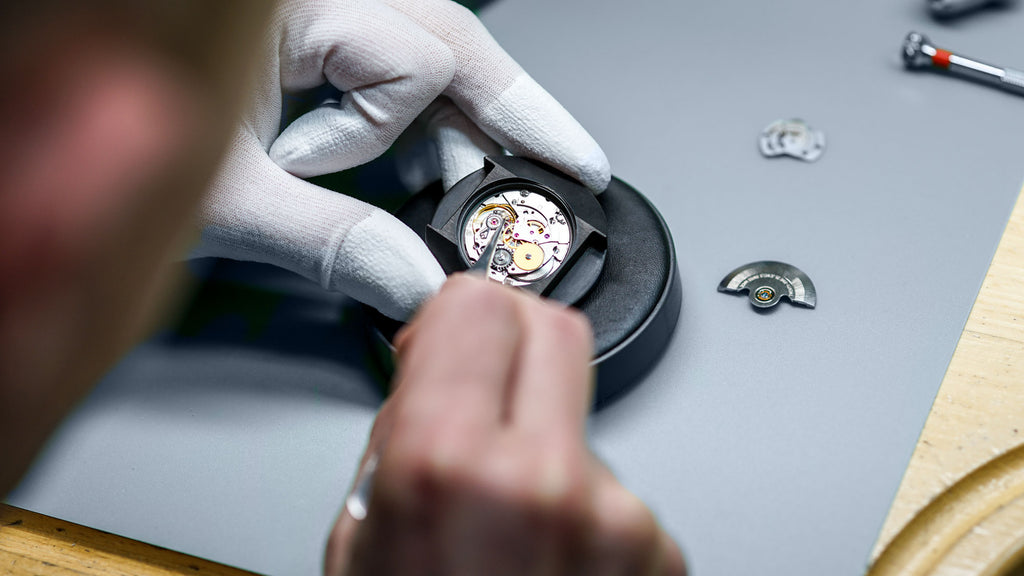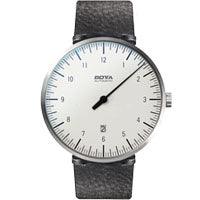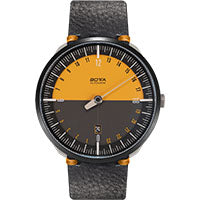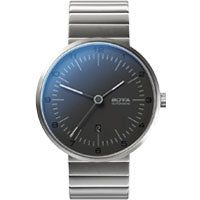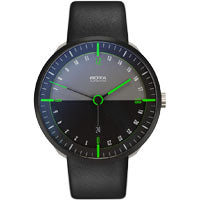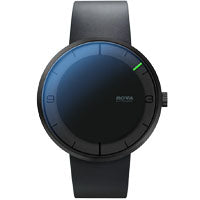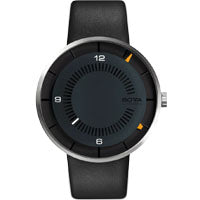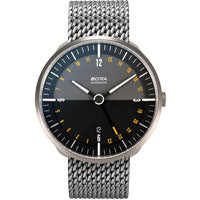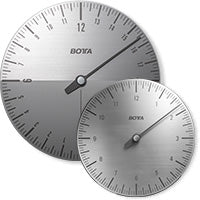Wristwatches with a mechanical movement, including automatic watches, should be inspected at regular intervals. At BOTTA, we understand a "complete revision" as a comprehensive cleaning and updating of the entire interior of the watch.
Why is this necessary and how is such a "complete revision" done?
The movement of a mechanical watch is a complex system consisting of various small, high-precision functional elements such as gears, shafts, bearings and metal plates. Many of these small components are constantly in motion, causing wear and abrasion.
In order to keep this wear as low as possible, the bearings of high-quality movements consist of a large number of ruby jewels in which the hardened metal tips (so-called pins) of the small axes rotate. A tiny oil droplet additionally reduces friction to a minimum.

Ruby bearing of an automatic movement
After 4-6 years, however, the oil is usually used up (synthetic oil, as we use it, no longer gums up, as was the case with mineral oils, but evaporates in the course of this time). The result is increased friction and a certain "loss of time" (the clock is slow). This is accompanied by a significant increase in wear at the friction points.
In addition, a sticky mixture is formed from the mixture of abrasion and evaporated oil, which is more or less deposited on all movement parts.
Now at the latest, a complete overhaul is urgently recommended in order to avoid gear inaccuracies and wear damage (comparable to an inspection of a car, which is also carried out about every two years).

The watch is completely disassembled during the revision to clean all parts and replace wearing parts.
What work does BOTTA carry out during a complete revision?
To come straight to the point: There is no precisely defined scope of work for the complete overhaul of a wristwatch. Each manufacturer has its own catalogue of services. Our watchmakers do not leave it at the basic cleaning and adjustment of your watch, but replace obligatory wear-prone components at the same time. The entire process takes several days and includes extensive optical and technical inspections.
Here are the steps in detail:
The watch is first disassembled into its components.
All housing components are then cleaned in a special ultrasonic cleaning device.
The hands and dial are removed from the movement.
The movement is completely dismantled into individual parts (see photo).
Now follows a multi-stage cleaning of all components of the movement in an elaborate fully automatic cleaning machine. All types of dirt are removed from the movement and thoroughly but gently removed.
After drying, all components are checked for signs of wear. If signs of wear appear, the relevant components are replaced. Certain components that are particularly susceptible to wear, such as the tension spring, the complete mainspring barrel, ratchet wheels and flywheel ball bearings, are replaced by Botta. A preventive measure that pays off twice over. The clock runs more accurately and performance losses in critical components are prevented proactively.
Components, of which there are newer versions, are also replaced. This keeps your movement up to date at all times.
The cleaned or renewed parts are carefully reassembled by hand to form a complete movement.
All bearings and friction points receive a precisely measured oiling with a special dosing tool, which works exactly to the fraction of a microlitre.
Dial and hands are mounted.
The movement is measured on the so-called timegrapher, a high-precision electronic measuring device, and adjusted step by step. Our watchmakers set our mechanical watches to an accuracy of +20 / -0 seconds per day. This ensures that this watch will not run slow under normal circumstances. (The default of the movement manufacturer is +30 / 0 seconds)

Now the reassembly of all components follows.
All housing seals are replaced.
The assembly movement, dial, hands is mounted in the case.
After a further optical intermediate check, the case is closed and tested for tightness in a special measuring device with overpressure and underpressure. We test all our watches in the overpressure range for 5 bar. A value, which guarantees the operational safety under normal loads of the everyday life (except swimming and diving).
Finally, the complete watch is subjected to another detailed visual inspection and a further gear check in an endurance test (at least 48 hours).
If the watch has passed all tests positively, it will be returned to you with a one-year guarantee.
After this, your watch is as good as new. A high-quality mechanical movement such as the ETA 2824.2 used by us lasts practically indefinitely with regular revisions with parts exchange. The 25 ruby bearings and decades of experience of the movement manufacturer ETA in the construction of such movements make a significant contribution to this.
It is not for nothing that the 2824-2 is regarded as one of the most reliable movements ever.
A regular complete overhaul preserves the value of your watch.
